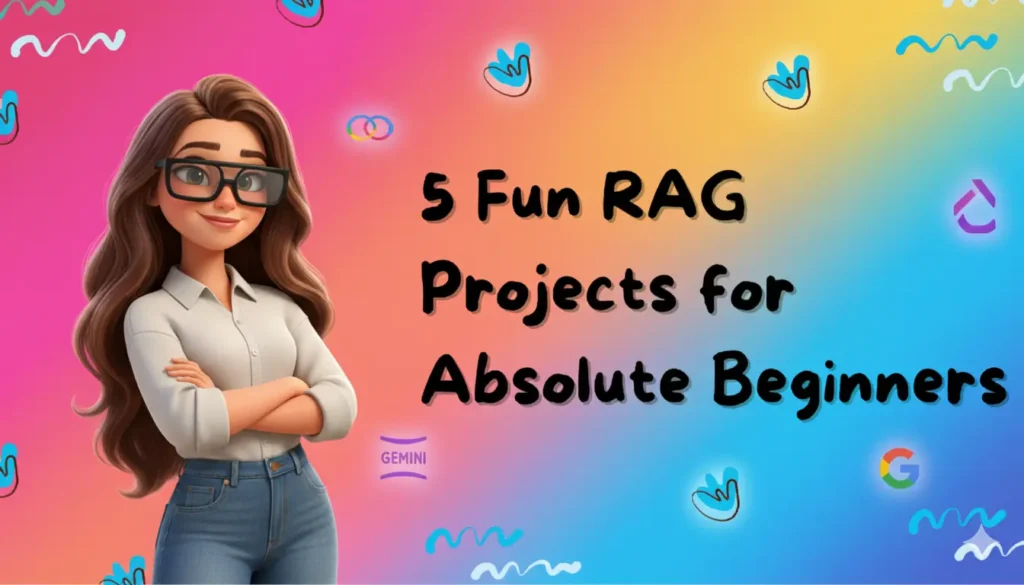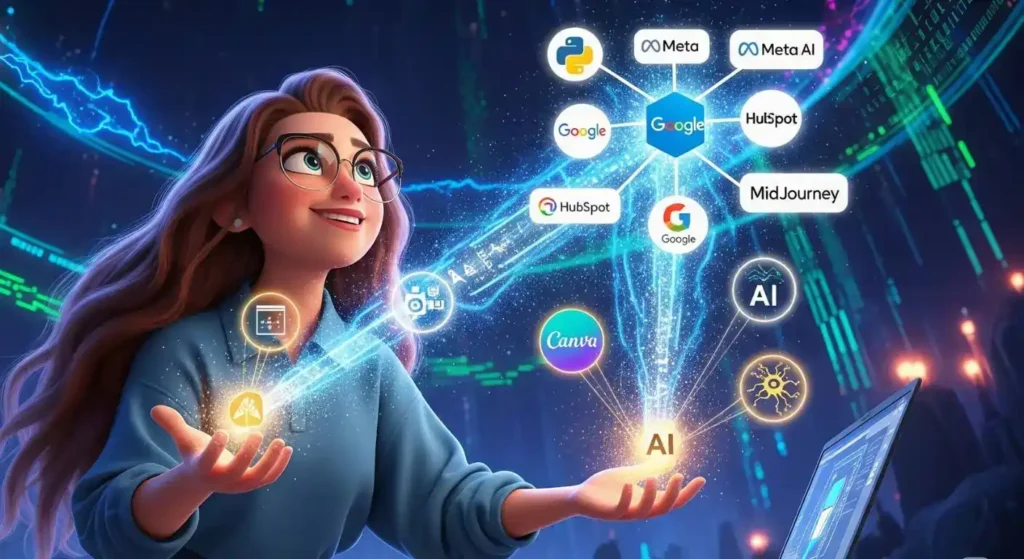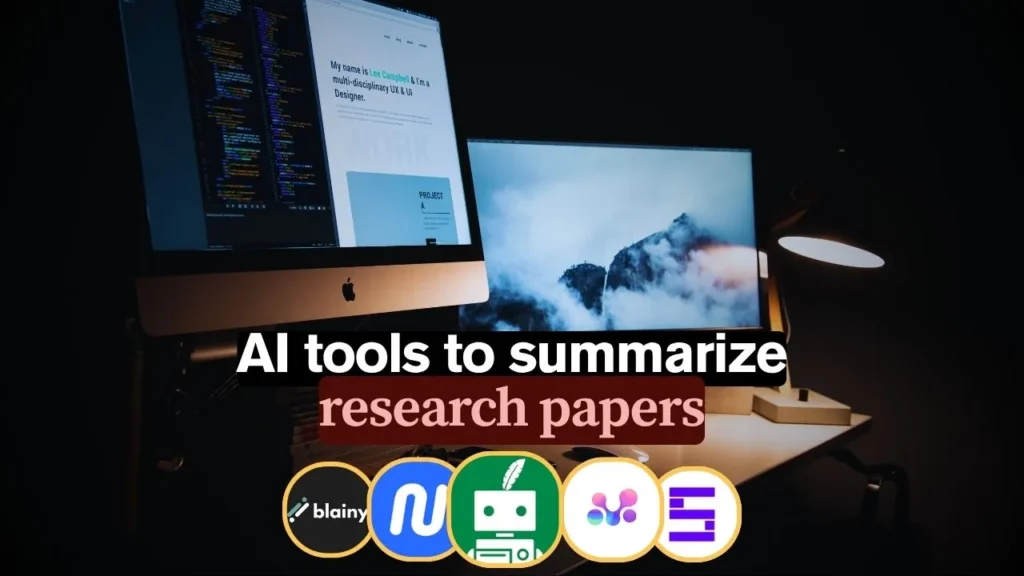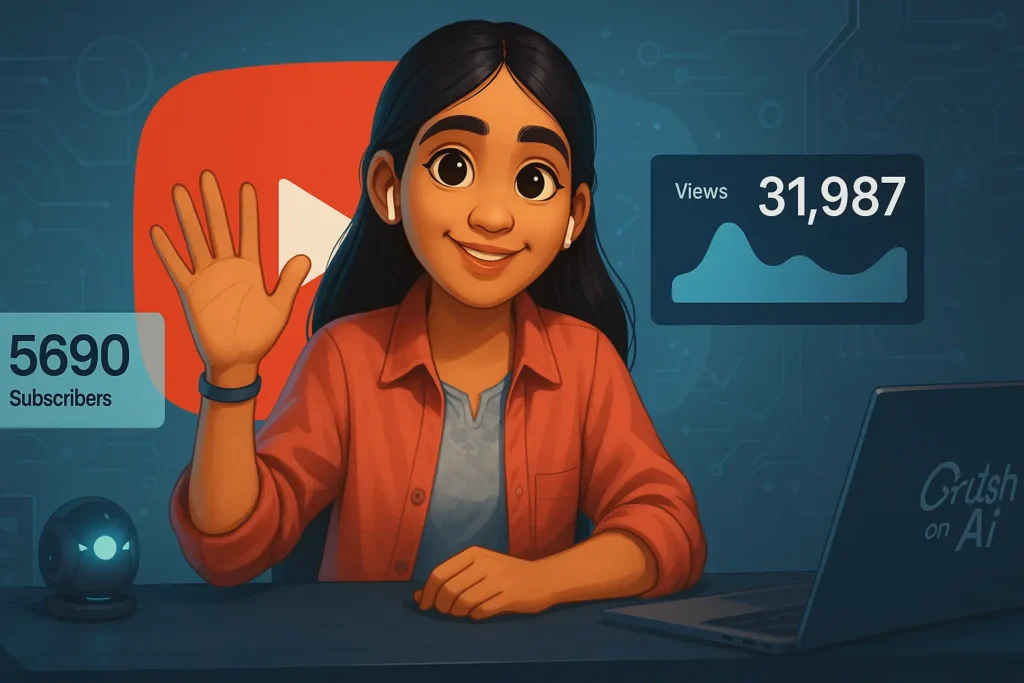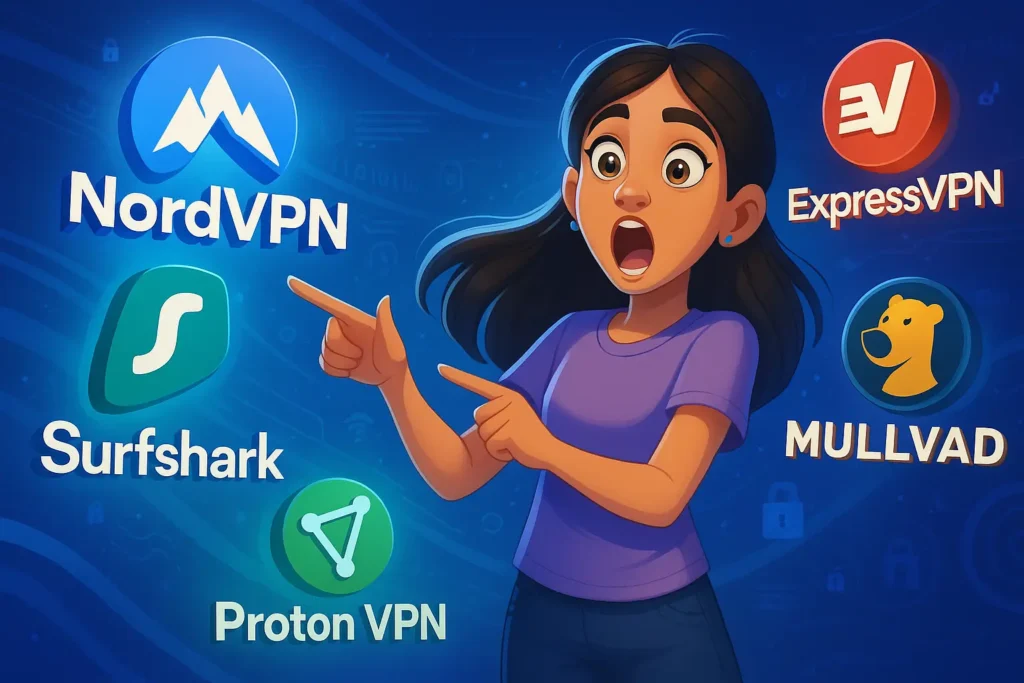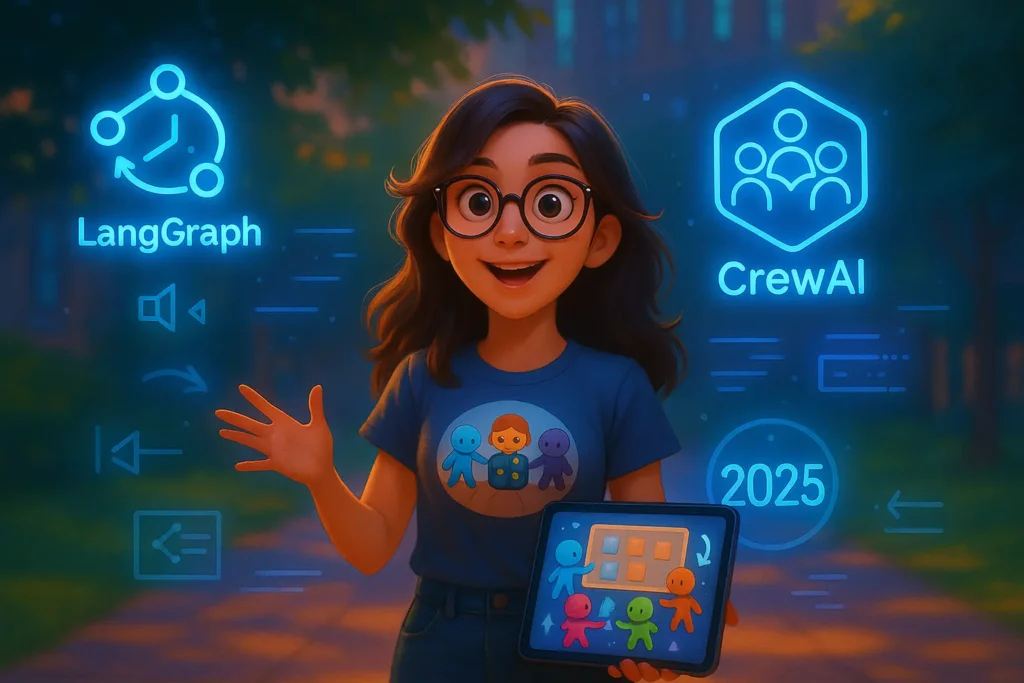Large Language Models (LLMs) like GPT-4 are changing how we interact with information, but they have a key limitation: their knowledge is fixed at the point of their last training. They cannot access real-time data and may sometimes create incorrect facts. This is where Retrieval-Augmented Generation (RAG) comes in. RAG is a method that improves a language model by linking it to an external, up-to-date knowledge base.
- #1. Building a RAG Application Using an Open-Source Model
- #2. Multimodal RAG: Chatting with PDFs Containing Images and Tables
- #3. Creating an On-Device RAG with ObjectBox and LangChain
- #4. Building a Real-Time RAG Pipeline with Neo4j and LangChain
- #5. Implementing Agentic RAG with Llama-Index
- Key Concepts Reinforced
- Wrapping Up
What You’ll Achieve with This Guide
This guide targets beginners looking to transition from theory to practice. Instead of merely reading about RAG, you will learn by doing. We will go through five distinct projects, each designed to teach different aspects of building AI-driven applications with RAG. You’ll begin with a basic project using an open-source model and move on to more advanced topics like multimodal data, on-device deployment, real-time data pipelines, and agentic systems. By the end, you will have a practical understanding of RAG architecture, experience with essential tools like LangChain and Llama-Index, and a project repository of your own to build upon.
#1. Building a RAG Application Using an Open-Source Model

Your first project is the “Hello, World!” of Retrieval Augmented Generation. The goal is to create a simple question-answering AI system that uses an open-source language model to answer questions about a specific document. This project reinforces your grasp of the core RAG pipeline without the added complexity of paid APIs.
Core Concepts: You will learn the basic workflow, which includes loading data, breaking it into manageable chunks, creating embeddings with an embedding model, storing them in a vector store, and establishing a chain linking a retriever to a generator.
Key Tools:
- Language Model: An open-source model like Llama 3 or Mistral, accessible via Hugging Face.
- Vector Database: A local, lightweight vector store such as FAISS or ChromaDB.
- Framework: LangChain or Llama-Index to manage the pipeline.
- Environment: A Jupyter Notebook for interactive development.
The Process:
- Setup: Start by installing the required libraries and downloading a pre-trained open-source LLM and embedding model from Hugging Face.
- Data Ingestion: Select a text document (e.g., a Wikipedia article saved as a .txt file) and use a document loader to bring it into your environment.
- Chunking and Embedding: Divide the document into smaller, semantically coherent chunks. Use your chosen embedding model to turn each chunk into a vector.
- Vector Storage: Load the vectors into your local vector database, creating a searchable knowledge base.
- Chain Creation: Build the RAG chain. This means creating a “retriever” object that can perform a vector search in your database and a “prompt template” that organizes the query and retrieved context for the LLM.
- Querying: Send a question to your RAG chain. The retriever will identify the most relevant chunks using cosine similarity, and the LLM will use that context to produce an accurate answer.
Link: https://www.youtube.com/watch?v=HRvyei7vFSM
#2. Multimodal RAG: Chatting with PDFs Containing Images and Tables

Standard RAG mainly handles text. However, real-world documents often contain text, tables, and images. This project takes you further by building an AI system that can understand and answer questions about all the content in a complex PDF.
Core Concepts: This project introduces multimodal RAG, teaching you how to extract and process different data types from a single source. You’ll learn to manage images (captioning) and tables (summarization) to convert them into a text-friendly format for the vector database.
Key Tools:
- Multimodal LLM: A model capable of image understanding, such as GPT-4o or a similar open-source model like LLaVA.
- PDF Parsing Library: PyMuPDF or a similar tool to extract text, images, and table structures.
- Vector Database: A database that can manage rich metadata alongside vectors.
The Process:
- Advanced Data Extraction: Use a PDF parsing library to navigate through your document. Extract plain text directly. For images, use an image-to-text model to create descriptive captions. For tables, extract the data and convert it into a structured summary (e.g., a markdown string or a natural language description).
- Unified Embedding: Embed the extracted text, image captions, and table summaries into your vector store. Importantly, link these embeddings with metadata identifying their source (e.g., page number, data type).
- Specialized Retrieval: Develop a retrieval strategy that fetches these varied data chunks.
- Contextual Generation: Your prompt engineering will play a crucial role here. The prompt should direct the language model on how to combine information from plain text, image descriptions, and table summaries to produce a coherent answer.
#3. Creating an On-Device RAG with ObjectBox and LangChain

Most RAG applications depend on cloud services, which can introduce delays, costs, and privacy issues. This project focuses on building a RAG application that runs entirely on-device. This setup is ideal for mobile AI applications or situations where internet access is unreliable or data privacy is critical.
Core Concepts: You’ll explore edge AI, concentrating on creating efficient, private, and offline-capable conversational AI. This involves using lightweight models and an on-device vector store.
Key Tools:
- On-Device Vector Store: ObjectBox, a fast, lightweight database designed for edge devices.
- Framework: LangChain for managing the RAG pipeline.
- Quantized LLM: A smaller, optimized version of a language model (e.g., using a library like Llama.cpp) that can run on local hardware with limited resources.
The Process:
- Environment Setup: Configure your local machine with ObjectBox and a quantized version of an LLM.
- Local Data Pipeline: Ingest your documents, create embeddings using a lightweight model, and store them directly in your local ObjectBox database.
- LangChain Integration: Use LangChain’s ObjectBox integration to build a retriever that queries the local vector store.
- Build the Chain: Connect the retriever to your locally-running quantized LLM.
- Execution: Run the entire RAG pipeline—from query to retrieval to content generation—without making any external API calls, ensuring complete data privacy and offline capability.
#4. Building a Real-Time RAG Pipeline with Neo4j and LangChain
Traditional vector search is good for finding documents based on semantic similarity, but it often overlooks the complex relationships between entities. This project introduces Graph RAG, where you create a knowledge base as a graph for more sophisticated retrieval strategies. This approach is suitable for complex fields like fraud detection or developing advanced research assistants.
Core Concepts: This project goes beyond simple vector search. You’ll learn to model data as a graph (nodes and relationships), perform graph-based retrieval, and combine it with semantic search for a more powerful AI system.
Key Tools:

- Graph Database: Neo4j, a leading graph database management system.
- Framework: LangChain, which has strong integrations for Neo4j.
- LLM: Any capable language model (e.g., GPT-4, Claude 3).
The Process:
- Knowledge Graph Creation: Use an LLM to analyze your documents and extract key entities (like people, companies, concepts) and their relationships. Store this structured data in Neo4j.
- Hybrid Retrieval: Put a hybrid retrieval strategy into place. For a specific query, first query the Neo4j graph to find directly related entities and their connections. Then, perform a vector search on the text tied to those graph nodes.
- Context Augmentation: Merge the results from both the graph query and the vector search to create a rich, multi-faceted context.
- Informed Generation: Feed this enhanced context to your LLM. Now the model can answer complex queries that require understanding relationships, such as “How are Company A and Researcher B connected through their work on Project X?”
#5. Implementing Agentic RAG with Llama-Index

A standard RAG pipeline is a linear process: retrieve, then generate. An “agentic” RAG system is more dynamic. It can think, reason, and take multiple steps to answer a complex question. This project focuses on building an AI agent that can autonomously decide when and how to use your RAG tool to solve a multi-step problem.
Core Concepts: You’ll learn about AI agents, reasoning loops, and tool use. The agent considers your RAG pipeline as one of the many tools it can call upon to gather the necessary background information to finish its task.
Key Tools:
- Agent Framework: Llama-Index, which provides strong abstractions for building agents.
- LLM: A model with good reasoning abilities, such as OpenAI’s GPT-4 or Anthropic’s Claude 3 Opus.
- RAG Pipeline: A ready-made RAG system from one of the earlier projects.
The Process:
- Tool Definition: Wrap your RAG pipeline into a “tool” using Llama-Index. This tool should clearly describe its function (e.g., “Answers questions about the financial document”).
- Agent Initialization: Create an agent and give it access to your RAG tool. You might also provide it with other tools, like a web search tool or a calculator.
- Prompt Engineering: Create a “meta-prompt” that outlines the agent’s goal and instructs it on how to reason and use the available tools to achieve that goal.
- Task Execution: Present the agent with a complex query, like “Compare the Q1 revenue from the financial document with the latest industry trends online.” The agent will first determine that it needs to use the RAG tool to find the Q1 revenue. Next, it will opt to use the web search tool. Finally, it will combine both pieces of information to give a complete answer.
Key Concepts Reinforced
By completing these five projects, you have moved from a foundational RAG implementation to advanced AI systems that can handle multimodal data, run on devices, understand complex relationships, and perform autonomous reasoning. This hands-on experience shows that RAG is not only a single technique but also a flexible framework for creating a new generation of intelligent, reliable, and factually-focused AI applications. The growing usage by businesses, with enterprises choosing RAG for 30-60% of their use cases, highlights the value of the skills you’ve just gained.
Next Steps and Advanced RAG Concepts
Throughout these projects, you have gained practical experience with the essential components of any modern AI system built on Retrieval-Augmented Generation:
- Data Ingestion and Chunking: The first critical step in preparing your knowledge base.
- Embedding Models and Vector Databases: The main technologies that support semantic search and efficient retrieval.
- Retrieval Strategies: Transitioning from simple vector search to advanced hybrid approaches that involve graph databases.
- Prompt Engineering: The skill of crafting instructions that help a language model best utilize the retrieved context.
- Orchestration Frameworks: Using tools like LangChain and Llama-Index to structure complex AI workflows and dialogue systems.
Wrapping Up
Your journey doesn’t stop here. The field of Retrieval Augmented Generation is rapidly developing. As you gain more confidence, consider delving into these advanced concepts:
- Modular RAG: This approach breaks the RAG pipeline into interchangeable parts (e.g., different retrievers, re-rankers, generators) that can be optimized or replaced to enhance performance for specific tasks.
- Fine-Tuning: Explore how to fine-tune the embedding model or even the LLM on your specific domain data to improve retrieval accuracy and generation quality.
- Advanced Evaluation: Learn to rigorously assess your RAG systems using metrics like context relevance, answer accuracy, and RAGAs to uncover weaknesses and drive improvements.

